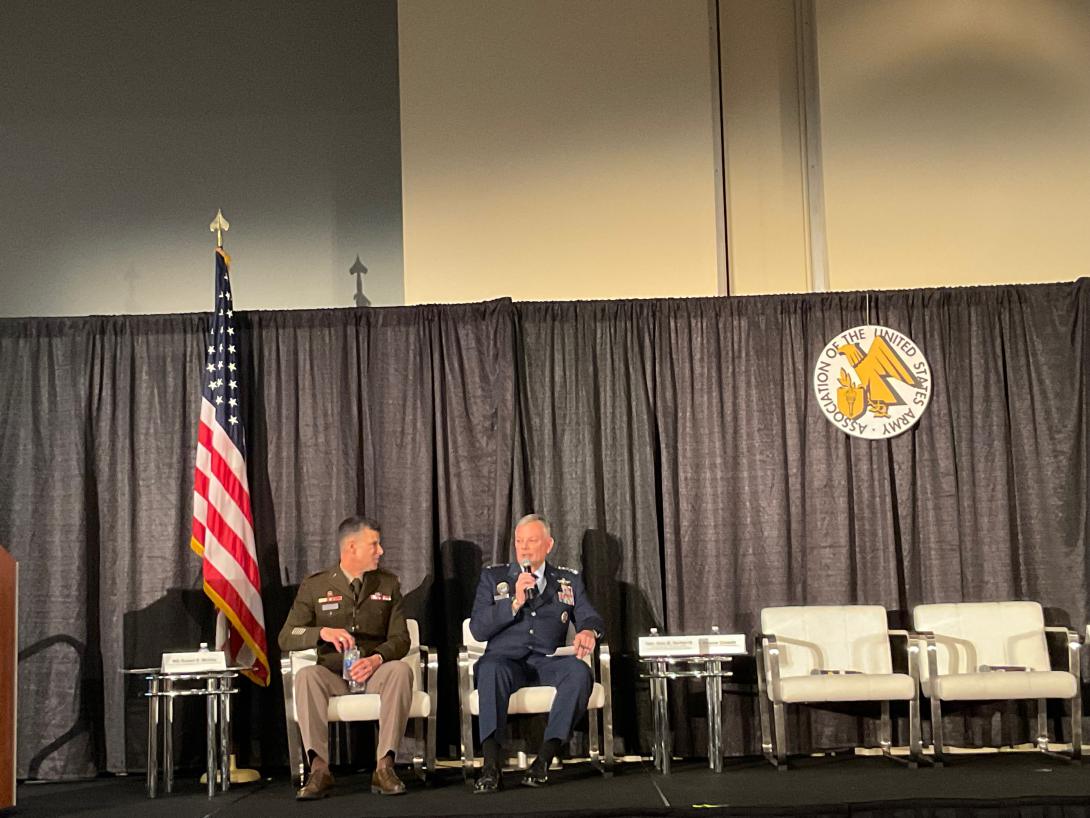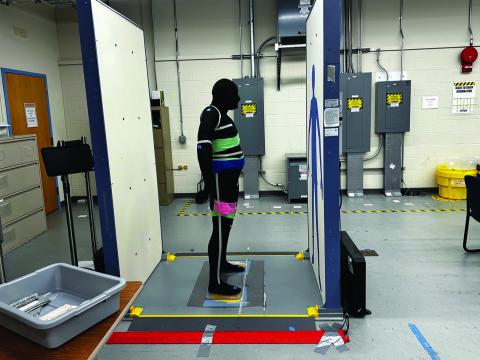Homeland Protector Calls for Revamped Force Arrangement
The possible present-day risks to the United States from Russia and other adversaries require the U.S. military to figure out a new homeland protection force posture situation, said Gen. Glen VanHerck, USAF, commander, North American Aerospace Defense Command (NORAD), and commander, U.S. Northern Command (NORTHCOM). The existing method of requesting so-called just-in-time forces will not work for that kind of evolving threat environment, Gen. VanHerck said.
Speaking on October 11 at the Association of the U.S. Army’s annual conference, the NORAD/NORTHCOM leader warned that currently, Russia is the largest threat to the homeland, with China about seven to 10 years behind.
“I think the National Defense Strategy (NDS) is right that the People’s Republic of China (PRC) is the pacing challenge with this, but I fought really hard to get the Russians included in the NDS, candidly, and this was before their acts of February 24,” the commander warned. “They are now the threat to the homeland. They are the primary military threat to the homeland today when it comes to kinetic capabilities and also nonkinetic. I like to say that the PRC is about seven to 10 years behind Russia when it comes to threats to the homeland.”
Kinetically, Russia has the potential to employ its hypersonic glide vehicle that is equipped with a nuclear-capable intercontinental ballistic missile. “It's been out there for four years, operational, with the United States of America and North America in its sights, but most people don't realize that,” Gen. VanHerck noted. “Some have said that the fractional orbital bombardment was one of those significant moments. I would say that actually, Russia fielded those capabilities well before the Chinese did.”
In addition, Russia’s developed cruise missiles can be sent from land, air, subsea or sea platforms with low radar detection. “[They] are very low radar cross-section now,” he acknowledged. “They make our North Warning System look like a picket fence. It was designed for 36,000-foot bombers back in the ‘70s and ‘80s timeframe, and now they can know where all those radars are and can circumnavigate those.”
Their long-range cruise missiles can launch from Russian air bases and attack “almost all of North America,” the commander said, including our homeland.
Moreover, the adversary is “on track” to field nine more dangerous submarines.
“They just moved the first seven subs into the Pacific,” Gen. VanHerck confirmed. “They’ve got seven in the Mediterranean right now and another that is on its way into the Atlantic. That will be a persistent proximate threat, capable of carrying a significant number of land-attack cruise missiles that can threaten our homeland.”
Both China and Russia have “significant interest” in the Arctic region, which for these adversaries is the closest route to attack the United States. Russia has already modernized its Arctic infrastructure, with more than a dozen installations across the Arctic, with “the intent to change international norms and rules that have existed since the end of World War II,” Gen. VanHerck stated. They are demanding to put military personnel on commercial vessels that sail through the Arctic to control routine commercial sailing through the northern passage.
China's threat to the polar region “is not far behind” Russia, the commander continued, with the PRC continuing to do military surveillance in the Arctic under the guise of research and development. “As China builds their type 95 and 96 submarines, they're going to field them with ballistic missile capabilities and park them in the Arctic just off the Alaskan coast, which significantly reduces our decision-space timeline,” he said.
For NORAD/NORTHCOM to be able to defend the homeland against such aggressive threats, the combatant command must be able to draw on U.S. forces and capabilities more easily, Gen. VanHerck suggested.
“I am the only combatant commander with a geographic area of responsibility without threshold forces,” he said. “Threshold forces are what's determined by the secretary of defense that you won't go below. We need to be ready to fight in and from our homeland. And the way I get my forces is through an RFF, with a just-in-time request for forces to meet that need. Those are things that we need to change as we go forward…. I told the secretary that one of my biggest challenges with executing my contingency and operational plans is access to organize, train and equip forces in a timely manner in my area of responsibility (AOR).”
The commander emphasized that the RFF construct is an old method that won’t really allow him to access troops quickly. “I feel like at times that United States Northern Command is a bit of the Achilles' heel for our foreign power projection,” he offered. “In the time that it takes me to set the homeland for defense is outside of the timeline that my fellow combatant commanders may require based on the threats in their AOR to project power that they need to respond to. And so I think it's my job to get inside that timeline so that I'm not the Achilles' heel. So that the president's not asking me or the secretary of defense is not asking me, ‘When can you get the homeland ready?’ The homeland needs to be ready each and every day. We shouldn't have to be asking ourselves to get forces ready in time of crisis.”
Lastly, Gen VanHerck noted that more than 50% of the AOR that NORAD/NORTHCOM defends is in the Arctic.
“Yet we are not organized, trained and equipped to be able to operate in an Arctic environment,” he stated. “I'm encouraged where the Army's going in regard to the Arctic, and the White House on Friday put out their new Arctic strategy and the number one pillar is defense in the Arctic. So probably we want to get after that from a department perspective.”





Comments